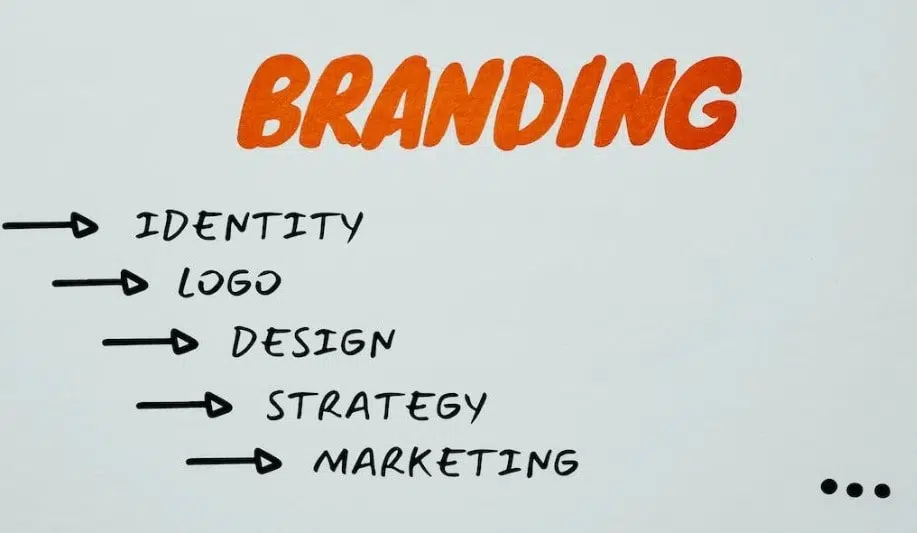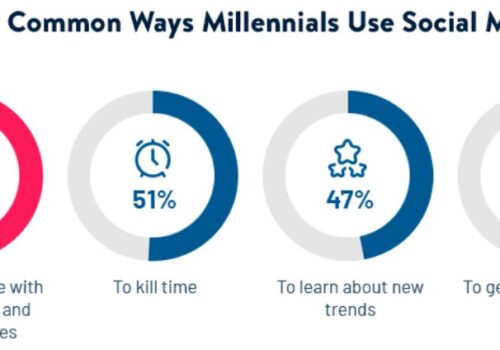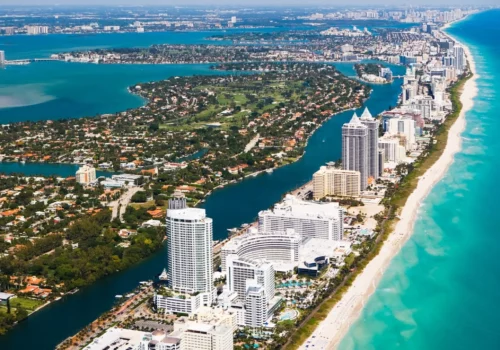Graphic design is an essential aspect of various industries, including government, retail, technology, and media. Therefore, it is imperative to have a fundamental understanding of the field.
If you’re interested in discovering fascinating facts, learning useful things, and exploring current design trends, you’ve come to the right place.
Let’s explore Graphic Design Stats, Ideas, and What’s Hot, whether you’re new to the world of design or just a curious individual who loves cool visuals.
Feeling unsure about where to begin? No worries. The research has already been done for you.
Image Credit: Pexels
I’ve gathered some data and facts about graphic design here under five distinct headings, and I’ll explain how they apply to marketing, web design, and branding, among other areas.
| Category | Statistic |
|---|---|
| General Graphic Design Statistics | 68% of graphic designers hold a bachelor’s degree. |
| 37% of independent graphic designers work for public companies, 56% for private companies. | |
| Top industries employing graphic designers: Media, Professional, Technology, Retail, Fortune 500. | |
| 40% of individuals respond more favorably to visual information than text-only information. | |
| 73% of businesses use design to outperform their rivals. | |
| Gender distribution in graphic design: 63% female, 37% male. | |
| 90% of bloggers and companies with blog sections use images in content marketing. | |
| Average age of a graphic designer in the US: 40 years. | |
| Color aids in brand recognition and image recall (80% of brand recognition is due to color). | |
| Graphic Design Pay Statistics | In the US, women earn 5-6% less than men in graphic design. |
| Average hourly wage for graphic design in the US: $24.38. | |
| Entry-level graphic designers can expect to earn $46,900 annually. | |
| Asian graphic designers earn the most on average ($55,000 annually). | |
| Top salaries in the industry: Art Directors, Creative Directors, Senior Designers, UX/UI Directors. | |
| Top paying cities in the US for graphic designers: San Francisco, Seattle, Boston, New York, Los Angeles. | |
| Marketing and Visual Content Stats | 85% of consumers are influenced by color when making purchases. |
| 32% of marketers say visual content is crucial for their organizations. | |
| 65% of brands use infographics for marketing. | |
| Infographics receive three times more shares and likes on social media than other visual content. | |
| 67% of online buyers find high-quality photos “extremely significant” for purchase decisions. | |
| Web Design Statistics | 94% of visitors will leave a website with poor design. |
| Over half of online consumers say a brand’s website design influences their perception of it. | |
| Popular colors for web design: Blue and Green. | |
| The main image on a website typically receives 5.94 seconds of attention. | |
| Branding and Design Stats | Nike’s logo was created for $35 by a graphic design student. |
| The global graphic design industry generates $3 billion in logo and branding design. | |
| 29% of consumers cite creativity as the most significant attribute of a brand. | |
| 33% of the top 100 brands in the world include blue in their logos. | |
| 86% of consumers say brand authenticity plays a role in their choices. | |
| Small firms are willing to spend $500-$1,000 on logo design. |
Facts and Figures About Graphic Design:
There are no spelling, grammar, or punctuation errors in the original text.
Image Credit: Pexels
How is a business in the graphic design field? Why is it crucial? You may find some facts and figures about the graphic design industry in this area.
- A bachelor’s degree is held by 68 percent of graphic designers.
A significant portion of graphic designers opt for an associate’s degree instead of a bachelor’s. A master’s degree is chosen by 3 percent of graphic designers, 3 percent have a high school diploma, and the remaining 93 percent have other degrees or certificates.
- The majority of independent graphic designers freelance for private businesses.
37 percent and 56 percent, respectively, of independent designers work for public companies and private companies. Retail is the #1 sector for hiring independent contractors (20 percent ).
- Media, professional, technology, retail, and Fortune 500 are the top five industries that employ graphic designers.
Graphic designers work for Fortune 500 firms at a rate of over 17 percent, trailed by media companies at 14 percent, retail at 11 percent, and professional, & technology at 10 percent.
- 40 percent of individuals react more favorably to visual data versus text-only information.
For this reason, businesses employ graphic design to promote their goods. In other words, visual information creates a stronger impression than text because it is easier to recall and can highlight a product.
- 73 percent of businesses use design to outperform their rivals.
Although there are few product categories, there are countless design possibilities. According to Adobe’s research, 73 percent of businesses invest money in design upgrades to differentiate themselves from the competition.
- Graphic designers are 63 percent female and 37 percent male.
In the field of graphic design, there wasn’t much of a gender disparity. Data from 2020 indicated that 48 percent of graphic designers were female. That’s a 15 percent rise! In recent years, the number of female graphic designers has significantly increased.
- Without graphic design, advertising and marketing would fail.
Graphic designs include everything from posters to packaging to social media posts. Because humans perceive images 60,000 times quicker than they do words, promotional materials that are solely text cannot compete with visual content.
- Images are used in content marketing by almost 90 percent of bloggers and companies having blog sections.
According to research, blogs with roughly ten photographs have a success rate of up to 39% since readers can more easily absorb the text when there are images there. It goes without saying that the visuals should complement the text. Infographics can further boost your chances of success.
- In the US, a graphic designer’s age is 40 on average.
Data from the graphic design sector indicate that graphic designers in the United States are often older than 40. (39 percent ). The youngest age group, aged 20 to 30 (27 percent), is followed by the second-oldest age group, from 30 to 40, which makes up 34 percent of the population.
- Color aids in brand recognition and image recall.
The color itself accounts for 80 percent of brand recognition, according to a study by color psychologists. Images in color are typically easier for us to process & retain than images in black and white.
Marketing Facts & Figures using Graphic Design & Visual Content
Image Credit: Pexels
Infographics, photos, and videos are kinds of visual content that have a significant influence on marketing and can influence user engagement and revenue. Here are some data on visual content that might help you plan your marketing approach.
- 85 percent of consumers are influenced by color while making purchases.
The very first thing that draws attention is color, which has a variety of effects on customer behavior. For instance, research demonstrates that warm colors like red have a greater impact on impulsive customers’ purchasing decisions since these hues imply urgency.
- For their organizations, 32 percent of marketers believe that using visual content is crucial.
Selling just written material is challenging. Infographics and other eye-catching graphics can boost sales by as much as 80 percent.
- Infographics are used for marketing by 65 percent of brands.
Infographics are said to be easier to learn and remember than text-only content, and they can increase website traffic by 12 percent.
- Infographics are shared and receive more likes on social media.
On social media, infographics receive three times as many shares and likes as other visual content. You name it: exercise routine, data report, meal plan, etc. Sharing information on social media is more effective when done with an image that clearly describes the context.
- High-quality photos were assessed as “extremely significant” to purchase decisions by 67 percent of internet buyers.
Because of this, many companies give their marketing materials considerable thought. For instance, effective copywriting, color and font selection, and eye-catching images are all essential.
Web Design Facts & Statistics
Possessing a well-designed website is beneficial whether you run an online store or just want to showcase your work. Quality content is essential, but design is also very important.
Here are some metrics and fascinating web design facts.
- A website with a poor design will lose 94 percent of visitors.
And what does a poor design seem like at first glance? On your homepage, arrange and highlight photographs! Remember that a first impression can be made in just 0.05 seconds, so you’ll want to make a good one.
- A little over half of online consumers claim that a brand’s website design greatly influences their perception of it.
There is no doubt that color matters. It’s crucial to stay on trend because an old design could suggest to a user that you aren’t upgrading your material. Most people enjoy learning about new things.
- Blue and green are popular choices for web design among users.
In addition to being linked with security, dependability, and trust, blue is also the most popular color among people overall, making it one of the safest hues to utilize.
Another prominent color is green, which is also most often used for culinary or wellness companies because of its strong associations with blooming, the environment, and health. It also implies approval in some way.
- Consumers find movies, color, and visual features in website design to be the most appealing.
40 percent go to photos and images, 39 percent to color, and 21 percent to videos.
- The typical amount of time spent on a website’s main image is 5.94 seconds.
For this reason, companies employ striking feature photographs on their home pages. People will look at your primary image for a longer period of time and are more inclined to go to other pages if you make it more captivating and interesting.
- Images with higher quality get greater attention.
Images of a high caliber exhibit professionalism. If the pictures on your website are pixelated, it suggests that you aren’t “taking care” of your brand’s reputation.
According to a study, pictures of “regular” people who seem approachable tend to get more attention than pictures of models.
FAQs
💻 What tools and software are commonly used in graphic design?
Common graphic design tools and software include Adobe Creative Cloud (Photoshop, Illustrator, InDesign), Canva, Sketch, and Figma, among others.
🤔 What is the average salary for graphic designers?
Graphic designer salaries vary by location, experience, and specialization. On average, graphic designers earn a median salary of around $53,000 per year in the United States.
📈 How has the role of graphic design evolved with the rise of digital media?
With the growth of digital media, graphic designers have adapted by creating digital assets for websites, social media, and mobile apps, expanding their role beyond traditional print design.
🧐 Can you provide examples of successful graphic design campaigns and their impact?
Successful graphic design campaigns include the iconic Coca-Cola logo, the Just Do It slogan by Nike, and Apple's minimalist product packaging. These designs have contributed significantly to brand recognition and success.
Quick Links:
- Napping Statistics, Facts, and Figures on Napping To Enhance Your Energy Levels
- College Graduation Statistics, Facts and Figures
- Generation Z Statistics, Facts, and Trends
- Ecommerce Statistics: Useful eCommerce Statistics You Must Know
Conclusion: Graphic Design Statistics 2024
Graphic design statistics offer valuable insights into the creative world of design. They help us understand trends, user preferences, and the impact of design on businesses.
By staying informed and adapting to evolving trends, designers can create compelling and effective visuals.
Whether you’re a beginner or an experienced designer, these statistics can guide you towards creating visually stunning and impactful designs.
Web design, branding, and marketing are all significantly influenced by graphic design. Some of the facts and figures can be used in your business.
Sources: office.xerox, cxl, bls.gov







